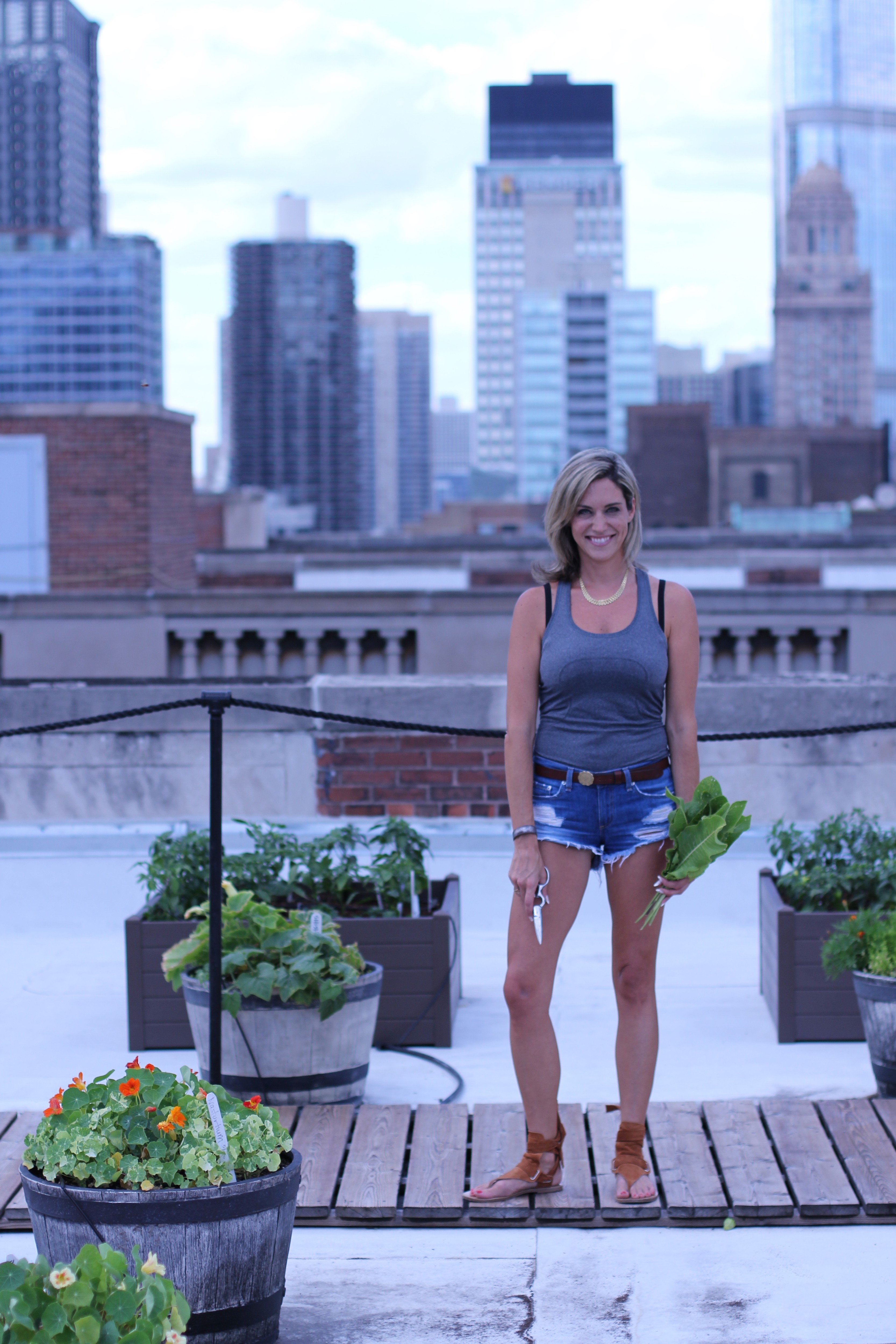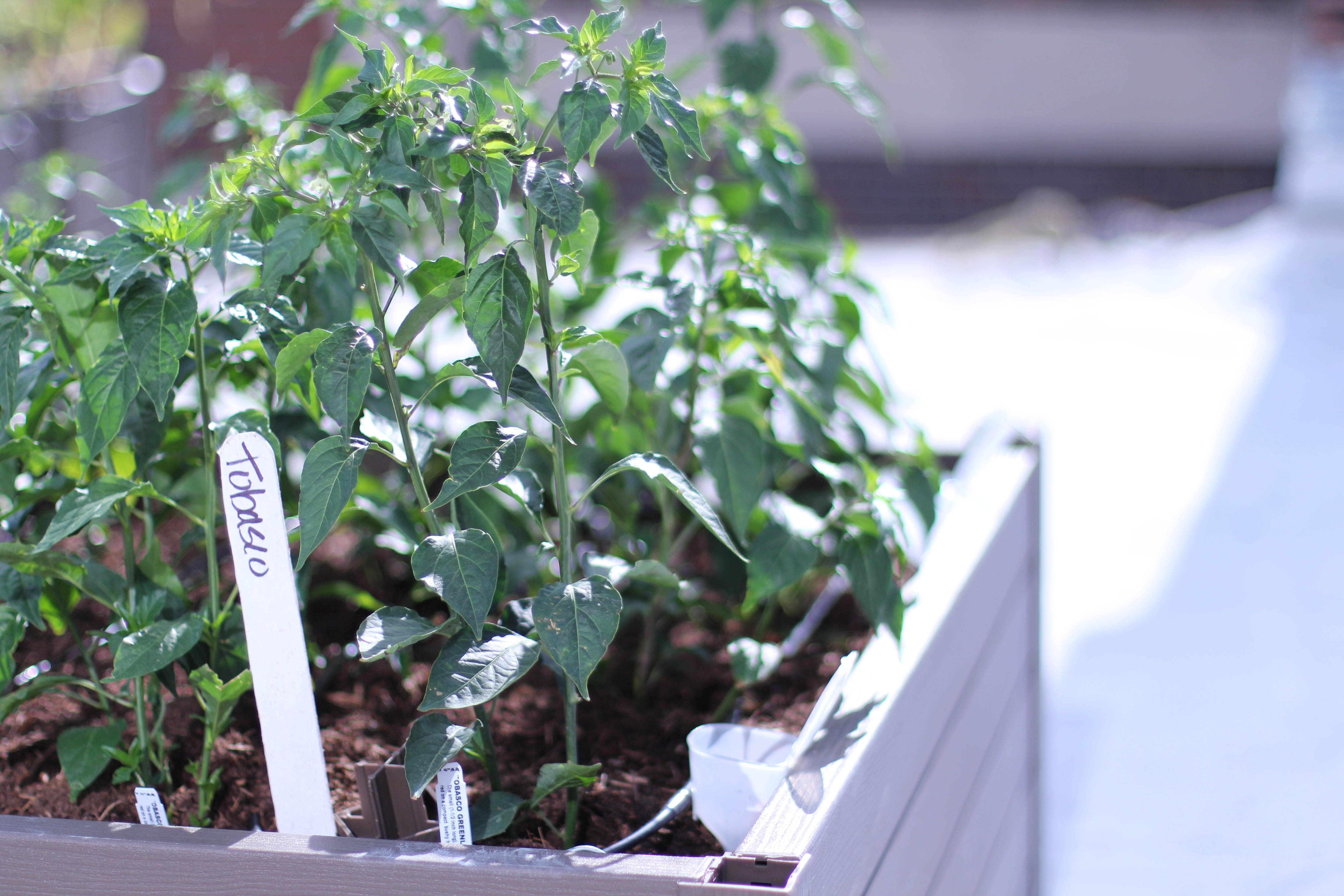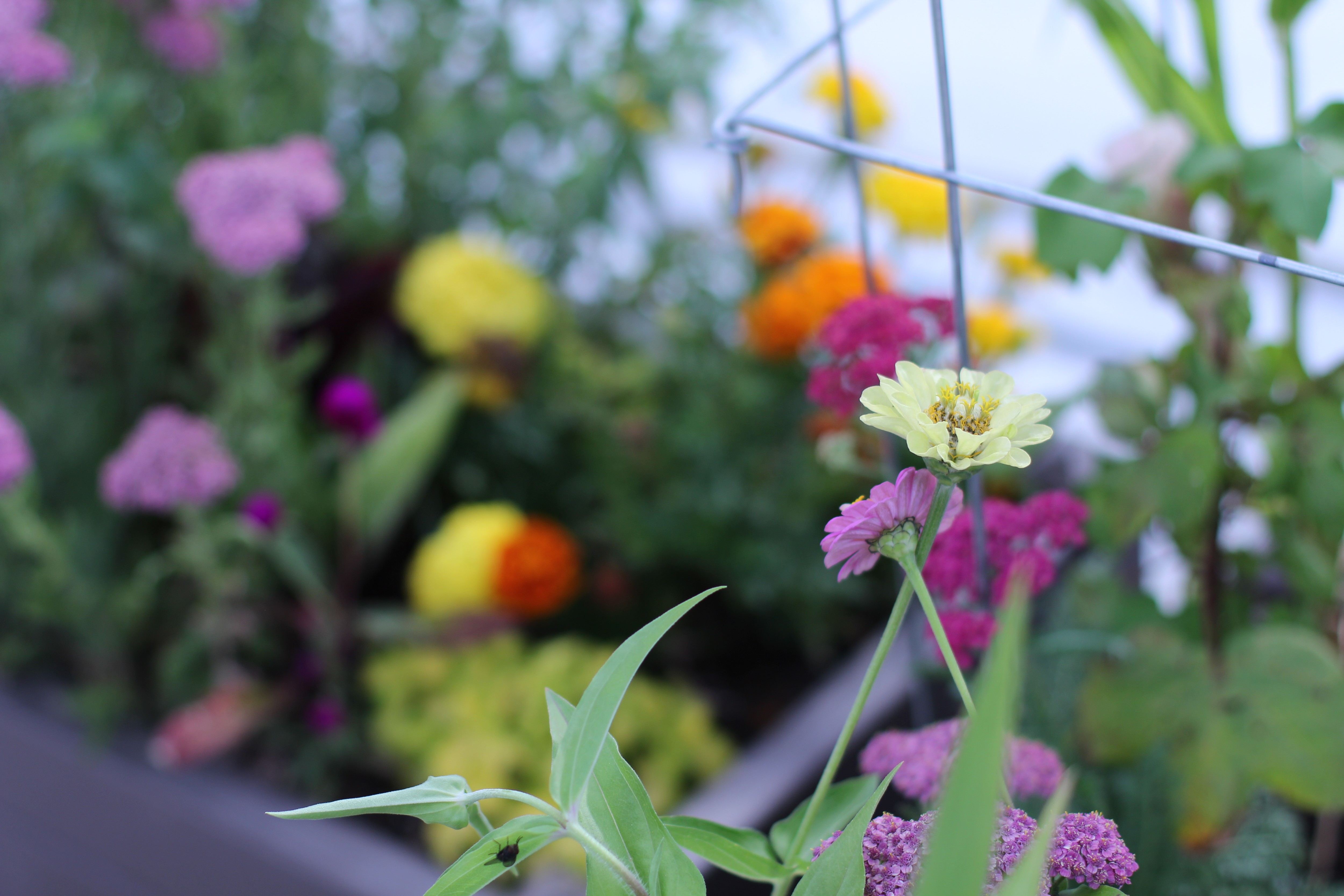Real Talk is our weekly series about the peaks, pitfalls, and perils of the food world. Every week, we’re taking you to the heart of food’s most glamorous (and difficult) projects with the help of our content partner MOO , whose products are all about making dream hustles into beautiful realities ( click here for 20% off your next order!)
From pop-up dinners to pop-tart marketing, hyper-local restaurants to global food empires, this is your peek behind the curtains of food & drink’s dreamiest initiatives and get—you guessed it—the real talk. This week, Taste Talks writer Nicole Schnitzler got the dirt from Chicago native Sara Gasbarra , who helps plan and maintain culinary gardens for some of the nation’s best restaurants and hotels t hrough her full-service garden design company Verdura . Her clients include Palmer House Hilton, Floriole Café and Bakery, The Catbird Seat, and the forthcoming Smyth + The Loyalist.
___________________
I have an art history and studio art degree. I ended up working at a university for seven years and began to realize I wasn’t happy — something was missing. I remember walking to the office one spring day and seeing these landscapers who were planting flowerbeds along Michigan Avenue, and all I could think was, “I’m so envious of them!”
When I quit I began volunteering with the Green City Market and their Edible Gardens, a 5,000-square-foot organic vegetable garden. I was always into food and grew up in a family that placed a lot of value around eating together and celebrating cultural food traditions.
Instagram came out around that time, and I started taking pictures of these amazing things we were growing—all of these unusual crops and heirloom varieties. I also started following chefs and restaurants in the city, who began following me back. They then began reaching out to ask if I could help them start a garden at their restaurant. That’s how it started. Without Instagram I really don’t think I’d have a business. I was on Twitter before but was like, “I’m not going to tweet a description of this.” Gardening is so visual.
 Sara Gasbarra on the roof of the Palmer House Hilton. Photo by Nicole Schnitzler
Sara Gasbarra on the roof of the Palmer House Hilton. Photo by Nicole Schnitzler
The first person to reach out to me was Sandra Holl of Floriole Café and Bakery in Lincoln Park. In 2010 she and her husband were opening that space and wanted me to work on a garden for them. I did an irrigation system and we came up with a game plan for the season. We maintained it, and it was great. They’re still my clients today, five years later, and every year the garden evolves. It’s fun to see the crop list from year one versus the one today.
At Palmer House Hilton we just planted seven varieties of chili peppers, ranging from tobasco chillies to chocolate habanero, for the hotel to use for their own hot sauce. At The Catbird Seat in Nashville, chef Ryan Poli was really interested in using a type of shiso where the top side is green and the underside is purple, and there are a few varieties that have that leaf coloration, including a Japanese and a Vietnamese one. I also helped them source 15 kinds of heirloom nasturtium in really cool hues. That’s what I get most excited about. It’s not just about going to the big box stores and picking out herbs. Instead, I try to find as many interesting options out there as I can. If someone wants basil, I’ll ask, “what kind? There are about 10 to choose from.” I have a list of about 350 varieties of vegetables, edible flowers, and greens, and I give it to my clients and ask them to make their own list for me. We’ll then go through it together and see what makes the most sense based on the amount of space we have to work with.
 Some of the newly planted tabasco plants at Palmer House Hilton. Photo Nicole Schnitzler
Some of the newly planted tabasco plants at Palmer House Hilton. Photo Nicole Schnitzler
There are a lot of restaurants in the city that have the space for a garden, but it takes a lot of work. And to have a successful garden, it can be time consuming. A lot of times people might think, “Yeah, we’ll just throw some plants in, we’ll water them, and it’ll just take off.” But it really it requires dedication. I visit my clients either once a week or every other week, depending on the season. I think a lot of restaurants do have garden projects already going, but these guys are busy, and their kitchens are really busy. There’s a lot of effort that goes into installing the garden, but it also takes upkeep — and that’s where I come in. I’ll weed and fertilize and keep an eye on everything. It’s gardening, so nothing is perfect — we can’t control everything. I’m really watchful, so if something isn’t doing well, I’ll take it out and put something else in.
A couple of years ago we had an incredibly rainy spring, and tomatoes just weren’t doing well. There was nothing I could do to get them going. At a certain point it was like, “we can’t waste any more time — this isn’t someone’s backyard garden, this is an investment for the restaurant.” I had to go to plan B. When it comes to the weather, you have to start looking at what’s not working and consider the plants that can tolerate those elements. Even though several of these projects are in the same city, each one really operates in its own microclimate. What works in one spot doesn’t necessarily work in another because of sun, wind, or heat.
 Nasturtium planted by Gascarra. Photo by Nicole Schnitzler
Nasturtium planted by Gascarra. Photo by Nicole Schnitzler
I often will go on Instagram and just scroll through the photos that people take of the dishes, and it’s not always the restaurant taking them — many times it’s the diner. Whenever I see one of these flowers or herbs really pull the dish together, I’m always like, “that’s just awesome.” I get to work with so many talented chefs who do such beautiful things with what I grow, and that’s really where it comes full circle for me — when I get to see people take pictures and can be like, “that little flower there is from the roof.” It may just be one little flower, but it still makes me feel proud.
I love to share the experience on social media from start to finish. I post so many photos on Instagram, not just to promote the gorgeous things my clients are doing, but also to inspire people and say, “look, this is how you can do this at home.” From a restaurant standpoint, it’s nice to walk a few feet and harvest exactly what you need at the perfect time. You’re not ordering it and getting it shipped in a clamshell — you have access to it constantly and can pick it right when you need it, and that’s a nice luxury to have.












